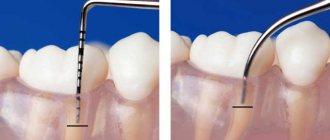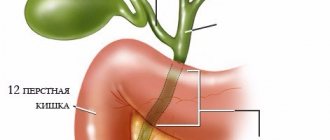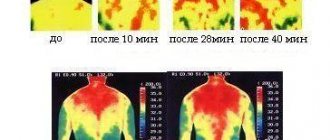Interstitial nephritis is a rare form of kidney inflammation, known for its severe course and non-infectious origin. The interstitium or interstitial tissue surrounds the tubules and glomeruli of the medulla. The damage begins in this type of cell, and then spreads to the vessels and the main structural units of the kidneys.
The importance of the study is due to the problems of diagnosis and treatment. It is this form of nephritis that causes up to 25% of cases of acute renal failure and up to 40% of chronic ones. The term “tubulointerstitial nephropathy” is considered more modern, which emphasizes the importance of impaired functioning of the tubules.
Read about other types of jade here.
Causes of interstitial nephritis
Interstitial nephritis is a nonspecific inflammatory disease of the connective tissue of the kidneys, in which the inflammatory process (generalized or local) secondarily involves other structures of the kidney - tubules, vessels, and subsequently the glomeruli.
Interstitial nephritis often has a transient course and is primarily caused by damage to tubulointerstitial tissue due to its hypoxia and edema. However, in some cases, the disease takes a protracted course, the mass of functional tubules decreases, foci of sclerosis and necrosis appear, and chronic renal failure develops. Over the past decades, there has been a tendency towards an increase in the frequency of this disease among the adult population, which is associated not only with improved methods for diagnosing interstitial nephritis, but also with the expansion of the influence of disease-causing factors on the kidneys (in particular drugs). Interstitial nephritis is the cause of 20-40% of all cases of chronic renal failure and 10-25% of acute renal failure. The development of the disease is not related to gender and age. In Ukraine, the prevalence of interstitial nephritis is 0.7 per 100 thousand population.
There are acute and chronic interstitial nephritis. Acute, in turn, is divided into post-infectious, toxic-allergic and idiopathic. Typically, acute interstitial nephritis is the leading cause of “unknown renal failure” when urine output is maintained and the kidneys are of normal size.
The causes of interstitial nephritis are quite varied. Primary interstitial nephritis (nephritis that occurs in the intact kidney) can develop after the use of antibiotics, which cause damage to both the proximal and distal tubules. If it is caused by analgesics or non-steroidal anti-inflammatory drugs, then the distal tubules are more affected. Sulfonamide drugs, infectious diseases, and immunological disorders cause diffuse damage to the medulla and papillae.
With secondary interstitial nephritis, inflammatory changes in the interstitial tissue develop against the background of previous kidney diseases, their causes are:
- myeloma nephropathy,
- amyloidosis,
- sickle cell anemia,
- gout, diabetes insipidus,
- transplanted kidney.
Chronic interstitial nephritis can be a consequence of untreated or undiagnosed acute interstitial nephritis, but more often develops without previous acute interstitial nephritis. In such cases, the reasons for its occurrence may be:
- drug, household and industrial intoxication,
- radiation impacts,
- metabolic disorders,
- infections,
- immune changes in the body, etc.
At the same time, the leading role in the occurrence of chronic interstitial nephritis belongs to the long-term use (abuse) of drugs, among which the first place in importance is occupied by analgesics (phenacetin, analgin, butadione, etc.), and in recent years - NSAIDs (indomethacin, methindole, voltaren, acetylsalicylic acid, brufen, etc.). The presence of a causal relationship between the occurrence of chronic interstitial nephritis and the abuse of phenacetin is now considered a generally accepted fact.
Depending on the predominant localization of the pathological process, kidney function also changes. If the proximal tubules are damaged, aminaciduria, glucosuria, microglobulinuria, bicarbonaturia are observed, and proximal tubular acidosis may develop. If the distal tubules are predominantly affected, renal acidosis may also occur due to decreased sodium reabsorption and secretion.
If the entire medulla and papillae are affected, the ability of the kidney to concentrate urine is impaired, and this leads to the development of “renal” diabetes insipidus with severe polyuria and nocturia. However, isolated damage to the proximal and distal tubules of the medulla and papillae is rarely observed and therefore clinical manifestations are often mixed. The main pathogenetic mechanisms for the development of interstitial nephritis are as follows:
- immunocomplex - deposition of immune complexes in the basement membrane of the tubules;
- autoimmune - formation of antibodies to the tubular basement membrane;
- cytotoxic damage to this membrane, tubular epithelium and blood vessels with the development of irreversible ischemic damage to the medulla;
- damage caused by cellular immune reactions.
Often in the development of interstitial nephritis, depending on the nature of the process (acute or chronic), these mechanisms are combined. The pathogenesis of acute interstitial nephritis can be represented as follows:
- a foreign substance (antibiotic, chemical agent, bacterial toxin, pathological proteins formed during fever, as well as serum and vaccine proteins), penetrating into the bloodstream, enters the kidneys, where it passes through the glomerular filter and enters the lumen of the tubule;
- here reabsorption and damage to the basal membranes occurs, destruction of their protein structures;
- due to the interaction of foreign substances with protein particles of basement membranes, complete antigens are formed;
- they are also formed in the interstitial tissue under the influence of the same substances penetrating into it through the walls of the renal tubules;
- subsequently, immune reactions of interaction of antigens with antibodies occur with the participation of immunoglobulins and complement with the formation of immune complexes and their deposition on the basement membranes of the tubules and in the interstitium;
- an inflammatory process and histomorphological changes develop in the renal tissue, characteristic of acute interstitial nephritis;
- a reflex spasm of blood vessels occurs, as well as their compression due to the development of inflammatory edema of the interstitial tissue, accompanied by a decrease in renal blood flow and ischemia of the kidneys, including in the cortical layer, which is one of the reasons for the decrease in glomerular filtration rate and, as a consequence, an increase in the level of blood urea and creatinine;
- swelling of the interstitial tissue is accompanied by an increase in intrarenal pressure, including intratubular pressure, which adversely affects the process of glomerular filtration and is one of the most important reasons for the decrease in its rate.
However, structural changes in the glomerular capillaries themselves are usually not detected. Damage to the tubules, especially the distal parts, including the tubular epithelium, with simultaneous swelling of the interstitium leads to a significant decrease in the reabsorption of water and osmotically active substances and is accompanied by the development of polyuria and hyposthenuria. In addition, prolonged compression of the peritubular capillaries aggravates disturbances of tubular functions, contributing to the development of tubular acidosis, decreased protein reabsorption and the appearance of proteinuria. Violation of tubular functions occurs in the first days from the onset of the disease and persists for 2-3 months or more.
The pathogenesis of chronic interstitial nephritis has features depending on the cause of the disease. Thus, some drugs (salicylates, caffeine, etc.) directly damage tubular epithelial cells, leading to dystrophic changes in them with subsequent rejection. There is no convincing evidence of a direct nephrotoxic effect of phenacetin on the tubular structures of the kidneys. There is an opinion that in the pathogenesis of phenacetin nephritis, the damaging effect on renal tissue is not of phenacetin itself, but of its intermediate metabolic products - paracetamol and P-phenetidine, as well as hemoglobin degradation products.
With prolonged action of analgesics and NSAIDs on renal tissue, profound shifts in enzyme activity occur, which lead to metabolic disorders and hypoxia in the interstitial tissue and sustainable changes in the structure and function of the tubular apparatus of the kidneys.
In addition, analgesics can cause necrotic changes in the renal medulla, primarily in the area of the renal papillae. In the origin of chronic interstitial nephritis, the state of reactivity of the body and its sensitivity to drugs are also essential. The possibility of autoimmune genesis of chronic interstitial nephritis cannot be ruled out due to the formed complex “drug + kidney tissue protein,” which has antigenic properties.
The main changes in nephritis are observed in the interstitial tissue. Characteristic is the alternation of affected areas, often radially located, with areas of unchanged parenchyma with a clearly visible border. Changes in the tubules and rarely in the glomeruli are found only in areas where there is infiltration and sclerosis of the interstitial tissue. The nature of these elements depends on the etiology of the disease (polynuclear cells, lymphocytes, histiocytes, fibroblasts). Tubular degeneration of the renal glomeruli develops, as well as large vessels at all stages of development of acute interstitial nephritis remain intact and only in the case of a severe inflammatory process can they experience compression due to pronounced swelling of the surrounding tissues.
With a favorable course of acute interstitial nephritis, the described pathological changes in the renal tissue begin to reverse, usually within 3-4 months. In the chronic course of chronic interstitial nephritis, as the disease progresses, a gradual decrease in the size and weight of the kidneys is observed (often up to 50-70 g). Their surface becomes uneven, but without pronounced tuberosity. The fibrous capsule is difficult to separate from the renal tissue due to the formation of adhesions and adhesions. On the section, thinning of the cortical layer, pallor and atrophy of the papillae, and the phenomenon of papillary necrosis are noted. Microscopically, the earliest histomorphological changes are found in the inner layer of the medulla and papilla. The renal vessels usually do not experience significant changes or are completely intact. However, in vessels located in areas of renal tissue that have been fibrously changed, hyperplasia of the middle and inner membranes is found, and sometimes hyalinosis is found in arterioles. This leads to the development of arteriolosclerosis, which largely affects medium-sized arterioles, an acute inflammatory process leads to melting of the papillae, and the presence of obstruction leads to their smoothing. In the presence of chronic interstitial, especially toxic nephritis, it can develop into necrosis of the papillae.
Taking into account the peculiarities of the clinical picture of the disease during its course, the following variants (forms) of acute interstitial nephritis are distinguished:
- an expanded form, which is characterized by the main clinical symptoms and laboratory signs of this disease;
- a variant of acute interstitial nephritis, proceeds according to the type of “banal” renal failure with prolonged anuria and increasing hyperazotemia, with the phasic development of the pathological process characteristic of acute renal failure and a very severe course, requiring the use of program hemodialysis;
- “abortive” form with the absence of anuria phase, early development of polyuria, slight and short-term hyperazotemia, favorable course and rapid (within 1-1.5 months) restoration of renal concentration function;
- “focal” form, in which the clinical symptoms of acute interstitial nephritis are mild, erased, changes in urine are minimal and inconsistent, hyperazotemia is either absent or insignificant and passes quickly; characteristic acute occurrence of polyuria with hyposthenuria, rapid restoration of renal concentration function and disappearance of pathological changes in the urine;
- acute interstitial nephritis due to another renal disease.
Causes of the disease
Interstitial nephritis occurs under the influence of environmental factors that partially or completely destroy the structure of the kidney. Against this background, an inflammatory process occurs, which gradually leads to the death of cells and tissues, and in their place a connective substance begins to grow.
With the development of interstitial nephritis, microbes do not participate in the pathogenesis of the disease, which distinguishes it from other ailments with a similar clinical picture.
Causes and factors of pathology:
- exposure to radiation;
- ionizing and x-ray radiation;
- living in an environmentally unfavorable environment (water, air, soil, food pollution);
- overweight (nutritional obesity stages 2–4);
- overdose of narcotic drugs and medications (especially analgesics or antibiotics);
- poisoning with industrial poisons, chemicals, alcohol and its surrogates, toxic gas;
- work in hazardous production;
- systemic and autoimmune diseases (diabetes mellitus, gout, lupus erythematosus, rheumatoid arthritis, scleroderma, polyserositis);
- malignant and benign tumors that disrupt the outflow of urine;
- complicated heredity (one of the relatives has a similar illness);
- the presence of stones and foreign bodies in the ureters.
How to treat interstitial nephritis?
Treatment of acute interstitial nephritis begins with hospitalization of the patient in a hospital, preferably a nephrological one. Since in most cases the disease proceeds favorably, without severe clinical manifestations, no special treatment is required.
Immediate discontinuation of medications that caused the disease in acute cases often leads to rapid disappearance of symptoms. In the first 2-3 weeks, strict bed rest and limiting sodium in the diet are recommended. The amount of protein in the diet depends on the level of azotemia. Correction of disturbances in electrolyte composition and acid-base properties is necessary.
In case of severe disease (high body temperature, severe oliguria), in order to quickly reduce the swelling of the interstitial tissue, intravenous administration of high doses of furosemide, oral prednisolone for 1.5-2 months, followed by a gradual reduction in the dose until complete withdrawal are indicated. The administration of anticoagulants and antiplatelet agents is also indicated.
Treatment of chronic interstitial nephritis consists primarily of discontinuing those medications that caused the development of the disease. This helps to slow down the progression and stabilize the pathological process in the kidneys, and in some cases, with early diagnosis, a ban on further use of drugs can lead to the reverse development of inflammatory changes in the interstitial tissue and restoration of the structure of the tubular epithelium.
Prescribe vitamins (ascorbic acid, B6, B5) to improve hemostasis in the presence of anemia, antihypertensive drugs if there is arterial hypertension, anabolic hormones (mainly in the stage of chronic renal failure).
Patients with severe chronic interstitial nephritis and a rapidly progressive course are prescribed glucocorticosteroids at a dose of 40-50 mg. In the absence of signs of chronic renal failure, there is no need for restrictions on the diet; it should be physiologically complete in terms of the content of proteins, carbohydrates and fats, rich in vitamins. There is no need to limit the amount of kitchen salt and liquid, since there is usually no edema, and daily diuresis is increased.
The addition of a secondary infection requires the inclusion of antibiotics and other antimicrobial agents in the complex of treatment measures.
Stimulants of nonspecific immunity (lysozyme, prodigiosan), drugs that support renal plasma exchange, and vitamin supplements are also prescribed.
What diseases can it be associated with?
With secondary interstitial nephritis, inflammatory changes in the interstitial tissue develop against the background of previous kidney diseases, their causes are:
- myeloma nephropathy,
- amyloidosis,
- sickle cell anemia,
- gout,
- diabetes insipidus,
- transplanted kidney.
Interstitial nephritis is classified:
- downstream: sharp;
- chronic;
- primary - occurs in an intact kidney;
The nature and severity of clinical manifestations of acute interstitial nephritis depend on the severity of general intoxication of the body and on the degree of activity of the pathological process in the kidneys.
The first subjective symptoms of a drug-induced disease usually appear 2-3 days after the start of treatment with antibiotics (usually penicillin or its semi-synthetic analogues) for exacerbation of chronic tonsillitis, otitis media, sinusitis, acute respiratory viral infections and other diseases that precede the development of acute interstitial nephritis.
Most patients complain of general weakness, sweating, headache, aching pain in the lumbar region, drowsiness, decreased or loss of appetite, and nausea. Often the mentioned symptoms are accompanied by chills with fever, muscle aches, sometimes polyarthralgia, and an allergic skin rash. In some cases, moderate and short-term arterial hypertension may develop. Edema is not typical for acute interstitial nephritis.
The vast majority of patients experience polyuria with low urine density (hyposthenuria) from the first days. Only in very severe cases of acute interstitial nephritis at the onset of the disease is observed a significant decrease in the amount of urine (oliguria) up to the development of anuria (which is combined with hyposthenuria) and other signs of acute renal failure.
At the same time, urinary syndrome also manifests itself: slight (0.033-0.33 g/l) or moderate (1-3 g/l) proteinuria, microhematuria, slight or moderate leukocyturia, cylindruria with a predominance of hyaline, and in the case of severe cases - the appearance of granular and waxy cylinders. Oxalaturia and calciuria are often detected.
At the same time, a violation of the nitrogen excretory function of the kidneys develops (especially in severe cases), which is manifested by an increase in the level of urea and creatinine in the blood against the background of polyuria and hyposthenuria. It is also possible that there is an electrolyte imbalance (hypokalemia, pponatremia, hypochloremia) and CBS with symptoms of acidosis. The severity of these renal dysfunctions depends on the severity of the pathological process in the kidneys and reaches its greatest extent in the case of acute renal failure.
Acute infectious interstitial nephritis occurs as a result of acute infectious diseases (scarlet fever, brucellosis, diphtheria, typhus, etc.), not accompanied by bacteremia and penetration of bacteria into the renal parenchyma. In the pre-antibiotic era, before the use of specific vaccines, it happened quite often. Unlike glomerulonephritis, acute infectious interstitial nephritis occurs in the first days of development of the infectious disease. There are lower back pain, chills, body temperature rises (usually low-grade), slight proteinuria, leukocyturia, cylindruria, less often erythrocyturia. The damage to interstitial tissue is focal and radial.
More pronounced severe impairment of kidney function is observed only with leptospirosis, candidiasis, and brucellosis.
Due to prolonged and severe polyuria, hyponatremia, hypocapiemia, hypochloremia, hypocalcemia often develop, the magnesium content in the blood decreases, and hypercalciuria appears. In about a third of patients, the course of chronic interstitial nephritis is complicated by the appearance of symptoms of renal colic with an increase in proteinuria and hematuria to macrohematuria, which is associated with the development of necrosis of the papillae (papillary necrosis) and obstruction of the ureters (ureter) with necrotic structural elements of the papilla or rejected papilla.
The clinical symptoms of papillary necrosis develop acutely, suddenly and, in addition to the mentioned signs characteristic of renal colic, are accompanied by fever, oliguria, leukocyturia, hyperazotemia, and symptoms of acidosis. This condition usually lasts for several days, after which the symptoms of papillary necrosis gradually decrease and disappear. However, in some patients the symptoms do not decrease, but increase, and the clinical picture takes on the character of severe acute renal failure with an unfavorable prognosis.
Diagnostics
The diagnosis can be suspected by a pronounced clinical picture or examination of individuals with minimal manifestations. Initial manifestations can be identified during medical examination of people working with salts of heavy metals, pesticides, and in paint and varnish production.
Urine analysis reveals:
- increased number of red blood cells (micro- and macrohematuria) in 100% of cases;
- protein (proteinuria) is released no more than 1.5-3 g per day;
- inconsistent changes in the sediment - moderate leukocyturia, casts, crystals of calcium and oxalates.
Increased concentrations in the blood are possible:
- residual nitrogen;
- α-globulin;
- urea and creatinine;
- eosinophilia.
The ESR accelerates, immunoglobulin E is detected. The potassium content decreases, the blood reaction moves towards acidity (acidosis). With timely detection of these changes and treatment, all indicators are restored after 2-3 weeks.
When making a diagnosis, it is necessary to take into account medical history, hereditary factors, and the patient’s allergic mood. The final answer is given only by the result of a puncture biopsy of the kidney. X-ray methods (including excretory radiography) do not have characteristic signs. Rarely, a radionuclide examination can reveal impaired renal function.
If there is papillary necrosis, then radiologists pay attention when studying the survey image to the shadows of calcifications of necrotic masses or a triangular-shaped calculus with softening in the center.
Examination using the excretory method and using retrograde pyelography reveals:
- ulcers in the area of the apex of the papillae;
- fistulas with movement of the contrast agent into the renal tissue;
- signs of papillary rejection or calcification;
- ring-shaped shadows indicating the formation of cavities.
X-ray diagnostics have characteristic signs only for papillary necrosis
When differential diagnosis with glomerulonephritis, it is necessary to take into account the medical history and the benign course of hypertension. Differences from pyelonephritis are established only by culture of a kidney biopsy.
Interstitial inflammation will not allow the growth of microorganisms, despite the presence of bacteriuria. It is possible to conduct an immunofluorescence study with neutrophil counting. With pyelonephritis, there is also inflammation of the tubular apparatus. In contrast, interstitial nephritis does not extend to the calyces and pelvis.
Sometimes there is a need to differentiate the disease from alcoholic kidney damage and infectious mononucleosis.
Treatment of interstitial nephritis at home
Treatment of interstitial nephritis is carried out exclusively in a hospital setting, where the patient is provided with bed rest, dietary nutrition, constant monitoring by specialized specialists and therapy appropriate to his condition.
Patients with acute interstitial nephritis, after the disappearance of acute manifestations of the disease, should be released from work for at least another 2-3 months, and sometimes for a longer period. Patients should avoid overwork and hypothermia. Prevention of acute interstitial nephritis should be aimed at excluding etiological factors of the disease.
Causes
There are many factors influencing changes in kidney function and the appearance of TIN. Non-purulent interstitial inflammation of the organ is caused by:
- Systemic processes and metabolic disorders - sarcoidosis, Sjogren's syndrome, hyperuricemia.
- Bacterial and viral pathologies - diphtheria, streptococcal infection, leptospirosis, cytomegalovirus.
- Obstruction of the urinary tract.
- Granulomatous diseases.
- Intoxication.
- Exposure to ionizing radiation;
- Taking certain medications - diuretics, NSAIDs (non-steroidal anti-inflammatory drugs), sulfonamide and fluoroquinolone antibiotics. The disease can develop as a result of the use of Cephalotin, Allopurinol. Ampicillin, Ibuprofen, Captopril, Penicillin, Phenytoin.
Since the signs of TIN are similar to the manifestations of other nephrological processes, if you have suspicious symptoms, you should go to the hospital.
What drugs are used to treat interstitial nephritis?
- Prednisolone - 40-60 mg per day for 1.5-2 months. followed by a gradual reduction in dose until complete withdrawal;
- Heparin - 20,000-30,000 units per day intramuscularly or intravenously;
- Dipyridamole - 300-450 mg per day.
The duration of active therapy depends on the course of the disease and the effect of treatment.
Treatment of interstitial nephritis during pregnancy
Interstitial nephritis during pregnancy is an unfavorable disease that negatively affects both the health of the mother and the chances of survival of the fetus. Therefore, doctors strongly recommend that women prevent the disease rather than subsequently treat it.
Prevention of acute interstitial nephritis primarily consists of careful and reasonable prescription of medications, especially in individuals with individual hypersensitivity to them. When prescribing medications, it is always necessary to take into account the likelihood of developing acute interstitial nephritis and first carefully collect an anamnesis on the patient’s individual sensitivity to a specific drug. Prevention of chronic interstitial nephritis of drug origin is to limit the use (especially long-term and in large doses) of phenacetin, analgesics and NSAIDs.
They should be prescribed only according to indications and treatment with them should be carried out under strict medical supervision, especially in cases of increased individual sensitivity.
Timely cessation of the use of analgesics helps, especially in the early stages of the development of chronic interstitial nephritis, stabilize the pathological process in the kidneys, slow down its progression with improvement of kidney function, and sometimes in patients with mild disease, can lead to recovery.
Treatment
Treatment involves eliminating the etiological factor, eliminating symptoms, and preventing complications. In case of kidney failure, hemodialysis is required to cleanse the blood of toxins.
The principle of hemodialysis by diffusion
Diet for inflammation of the interstitial tissue of the kidneys
Diet for inflammatory changes in the interstitial tissue of the kidneys:
- Eating low-calorie foods;
- Limiting purine diet;
- Drink plenty of alkaline drinks;
- The daily amount of protein is no more than one gram per kilogram;
- The fat concentration is equal to the protein content;
- Consumption of fish oil provides a nephroprotective effect.
Inflammation of the renal glomeruli disrupts the main function of the kidneys - cleaning the blood from metabolic products. Find out why glomerulonephritis in children is a common diagnosis. How to resist this and what is the treatment of glomerular inflammation based on? Read about the symptoms of female pyelonephritis in this section. The course of the disease in the chronic and acute stages.
Prevention of tubulointerstitial nephritis
Preventive measures include limiting the consumption of purine compounds, timely treatment of high blood pressure, and preventing the negative effects of blood toxins on the kidneys.
Purine content in foods
You should not unnecessarily take medications that can provoke inflammation of the interstitial tissue of the kidneys.
Treatment of other diseases starting with the letter - and
| Treatment of yersiniosis |
| Treatment of ileus |
| Treatment of impetigo |
| Internet addiction treatment |
| Treatment of intra-abdominal abscesses |
| Treatment of heart attack |
| Treatment of pulmonary infarction |
| Treatment of splenic infarction |
| Treatment of erythema infectiosum |
| Treatment of hysteria |
| Treatment of ichthyosis |
| Treatment of ischemic stroke |
The information is for educational purposes only. Do not self-medicate; For all questions regarding the definition of the disease and methods of its treatment, consult your doctor. EUROLAB is not responsible for the consequences caused by the use of information posted on the portal.











